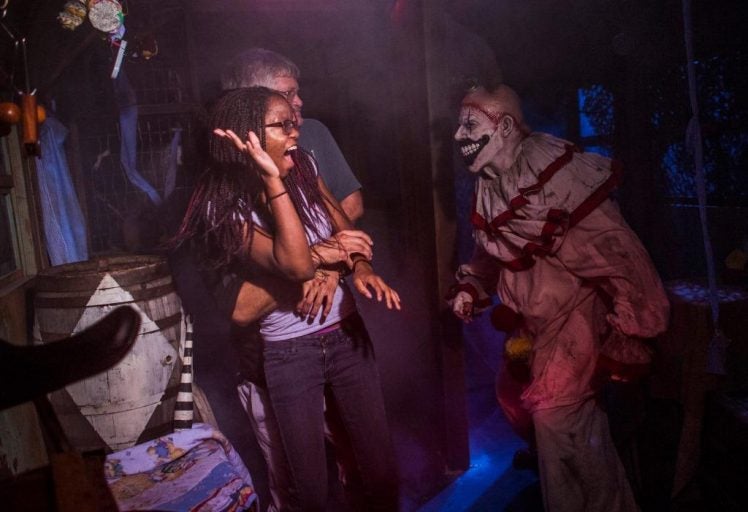Most of us have never been chased down with a chainsaw, but a primal part of our brains loves the thrill of that horrific possibility.
That’s one reason why haunted houses and their newer incarnations – horror nights – are an ever-popular and growing business, especially around Halloween. Consumers are expected to spend $8.4 billion celebrating Halloween, according to the National Retail Federation annual survey. That includes buying candy and activities related to the celebration such as haunted houses. It’s the highest amount since the federation began the survey in 2003.
“Evolutionary theory suggests that we are hard-wired to pay attention to opportunities and to threats,” said Bridget Rubenking, an assistant professor in the Nicholson School of Communication. She studies human behavior, especially as it it relates to how people use media. “Also, things that don’t elicit the same cues that threats or opportunities do, are boring to us.”
Translation: We don’t like to be bored and we all have a bit of a thrill-seeker in us.
Rubenking’s research focuses specifically on why people seek out media that makes them feel fearful or disgusted. She is interested in why people make what she calls “sometimes seemingly faulty” decisions about media use – like choosing to relax after a long day at work by watching a horror movie or an episode of The Walking Dead.
But thrill-seeking isn’t the only reason why people seek out horror.
“There’s something of value in reading a horrifying news story or watching a horror film,” Rubenking said. “It lets us do horrible and sad things vicariously. Those things can be meaningful in learning how to emotionally respond in the safe environment of media.”
In other words, it’s a safe way to take a risk.
Her research was published in the Journal of Communication with co-investigator Annie Lang from Indiana University.
Horror night experiences and adventures, such as those found at theme parks and zoos around Halloween and on International Drive in Orlando for tourists, offer an interesting twist to the theory. The experiences are still all manufactured and safe, but because participants are actively involved and not just passively watching on television, the thrill is even more intense.
Rubenking said these interactive horror experiences present a fun, yet safe, cheap thrill.
“The kind of scary that doesn’t stick with you later is especially attractive to individuals who are high in risk-taking or sensation seeking,” she said.
